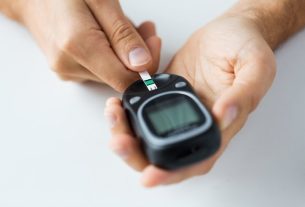The main symptoms of a generalized epilepsy seizure are:
- Convulsions, which are violent and involuntary contractions of muscles;
- Muscle stiffness, especially in the arms, legs and chest;
- Excessive salivation;
- Urinary and/or fecal incontinence;
- Mental confusion;
- Imperceptible speech;
- Biting your tongue and grinding your teeth;
- Difficulty breathing;
- Aggressiveness;
- Loss of consciousness, so that the person may not remember the episode.
After an epilepsy episode, it is normal to feel drowsy, headache, nausea and vomiting. Symptoms of epilepsy often occur without warning and can occur during the day or during sleep, and can affect people of all ages, from babies to the elderly. When an epilepsy crisis lasts more than 5 minutes, you should seek medical help by calling 192, or take the victim immediately to the hospital. See what to do in an epilepsy crisis.
Epilepsy occurs due to changes in the conduction of nerve impulses in the brain, resulting in excessive electrical activity. In some cases, epilepsy may only affect a small part of the neurons, resulting in partial epilepsy, or cause an absence seizure, which is when the person remains still and completely absent, not speaking or reacting to touch for a few seconds. Learn more about epilepsy.

Partial epilepsy symptoms
In some situations, epilepsy can only affect a small part of the brain’s neurons, causing milder symptoms that correspond to the affected part of the brain. For example, if intense brain activity occurs in the part of the brain that controls movements of the left leg, it may experience contractions and stiffness. Therefore, in this case of epilepsy, the symptoms are limited to the affected area.
Absence seizure symptoms
The absence crisis is characterized by less intense symptoms, the main ones being:
- Stand still and very still;
- Remain with an empty look;
- Uncontrollably moving the muscles of the face;
- Make movements as if you were chewing;
- Move your arm or leg constantly, but lightly;
- Tingling in the arms or legs;
- Slight muscle stiffness.
Furthermore, in this type of crisis, there is usually no loss of consciousness, just a strange sensation of deja vuand in most cases it only lasts between 10 and 30 seconds.
Absence seizures are more common in children, and, in most cases, they are benign and affect children between the ages of 3 and 13. See how to identify an absence crisis.
What to do
In the case of an epileptic seizure, it is recommended to place the person experiencing the seizure on their side, with support under their head, loosen tight clothing and do not hold their arms and legs. Furthermore, it is recommended not to put your hand in the person’s mouth or give liquids or food during the crisis, and it is recommended to count the time of the crisis and call medical help.
It is important that a neurologist is consulted so that the diagnosis can be made and the most appropriate treatment can be initiated, which normally involves the use of anti-epileptic medication, such as Oxcarbazepine, Carbamazepine or Sodium Valproate, for example. When epilepsy attacks are not controlled with the use of medication, it may be necessary to combine several medications. Check out more details about the treatment for epilepsy.
During treatment, individuals with epilepsy attacks should avoid situations that cause seizures, such as going without sleep for a long time, drinking excessive alcohol or being in environments with a lot of visual stimuli, such as nightclubs.
Bibliography
- AMERICAN ACADEMY OF PEDIATRICS. Seizures Overview. Disponível em: <https://www.aap.org/en-us/Documents/echo_session%201_seizures_overview.pdf>. Acesso em 08 jul 2019
- INTERPREV. Training Manual: first aid in the workplace. 2015. 22.
- THE LANCET. Medical causes of seizures. Available at: <https://www.thelancet.com/pdfs/journals/lancet/PIIS0140673698021588.pdf>. Accessed on 08 Jul 2019
- CDC. Types of Seizures. Available at: <https://www.cdc.gov/epilepsy/about/types-of-seizures.htm>. Accessed on February 21, 2020

Sign up for our newsletter and stay up to date with exclusive news
that can transform your routine!
Warning: Undefined array key "title" in /home/storelat/public_html/wp-content/plugins/link-whisper-premium/templates/frontend/related-posts.php on line 12
Warning: Undefined array key "title_tag" in /home/storelat/public_html/wp-content/plugins/link-whisper-premium/templates/frontend/related-posts.php on line 13



